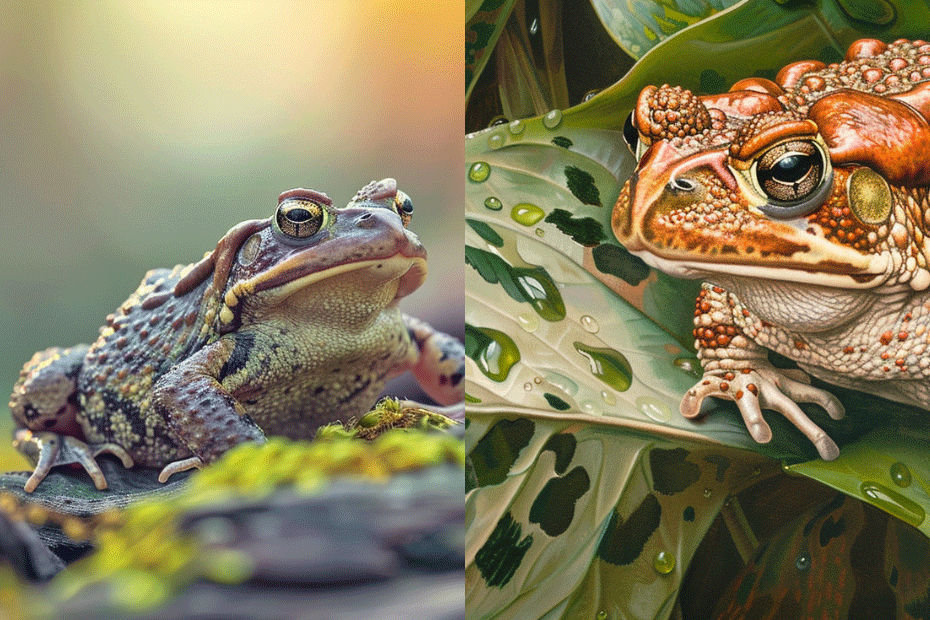Are you curious about the differences between the notorious cane toad and the charming southern toad? These two amphibians may seem similar at first glance, but a closer look reveals distinct characteristics that set them apart. In this text, we’ll explore their habitats, behaviors, and impact on the environment to help you understand the unique traits of each species.
The cane toad, known for its toxic skin secretions and rapid reproduction, has garnered attention for its invasive nature in various ecosystems. On the other hand, the southern toad, with its melodic call and preference for moist environments, plays a different role in the ecosystem. By delving into their physical features and ecological roles, you’ll gain valuable insights into how these two toad species navigate their respective habitats.
Key Takeaways
- Cane toads and southern toads have distinct physical characteristics; cane toads are larger with rough skin and toxic secretions, while southern toads are smaller with warty skin and melodic calls.
- Cane toads, known for their rapid reproduction and invasive nature, have a more significant impact on ecosystems than southern toads.
- Southern toads prefer moist environments like forests and gardens, while cane toads thrive in tropical and subtropical regions.
- Cane toads are voracious eaters with a broad diet, while southern toads have a more limited diet focused on insects and small invertebrates.
- The ecological impact of cane toads is negative, leading to a decline in native species populations, whereas southern toads have a lesser impact due to their behavior and diet.
- Understanding the differences between these two toad species is crucial for recognizing their roles in different ecosystems and managing their populations effectively.
Background of Cane Toad and Southern Toad
Cane Toad Overview
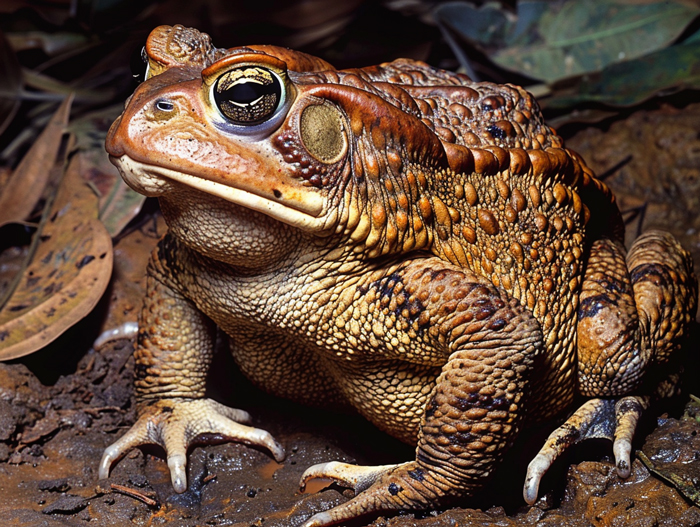
The cane toad, also known as the Bufo or Rhinella marina, is a large and robust amphibian native to South and Central America. Introduced to various countries for pest control, it’s now considered one of the most invasive species worldwide. With distinctive warts and parotoid glands behind the eyes, this toad is distinguishable by its toxic skin secretions. Cane toads have a rapid reproduction rate, laying thousands of eggs at a time, contributing to their populous presence in multiple ecosystems.
Southern Toad Overview
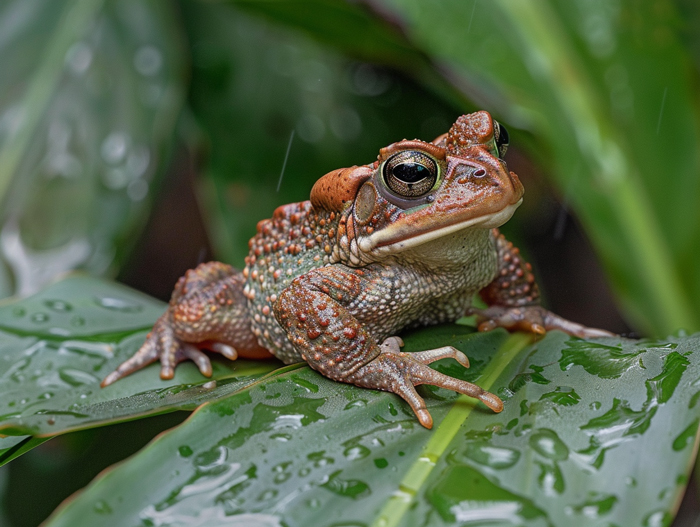
The southern toad, or Anaxyrus terrestris, is a smaller species compared to the cane toad, primarily found in the southeastern United States. Recognizable by its dark spots and grayish-brown skin, this toad emits a melodic trilling call during mating season. Unlike the cane toad, southern toads prefer moist environments such as gardens, forests, and marshes. Their role in the ecosystem involves controlling insect populations due to their diet of ants, beetles, and other small invertebrates.
Physical Characteristics
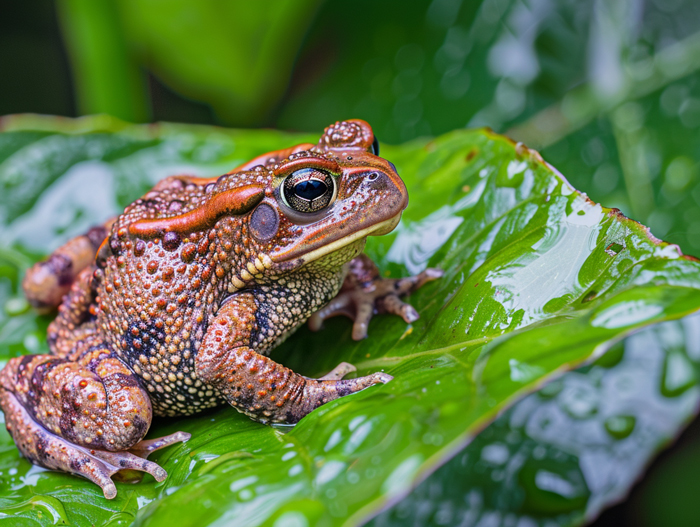
Cane Toad
- Size: Adult cane toads can reach up to 4 to 6 inches in length.
- Color: They have rough, bumpy skin and are usually brown, grey, or olive-green with lighter undersides.
- Parotoid Glands: These glands behind their eyes secrete a milky toxin as a defense mechanism.
- Eyes: Golden eyes with horizontal pupils.
- Size: Southern toads are smaller, typically ranging from 1.5 to 3 inches in length.
- Color: They have warty skin with prominent dark spots and can vary in color from gray to reddish-brown.
- Call: Southern toads produce a melodic trilling call during their mating season.
- Habitat: They are mostly found in moist environments like forests, gardens, and near water bodies.
Habitat and Distribution
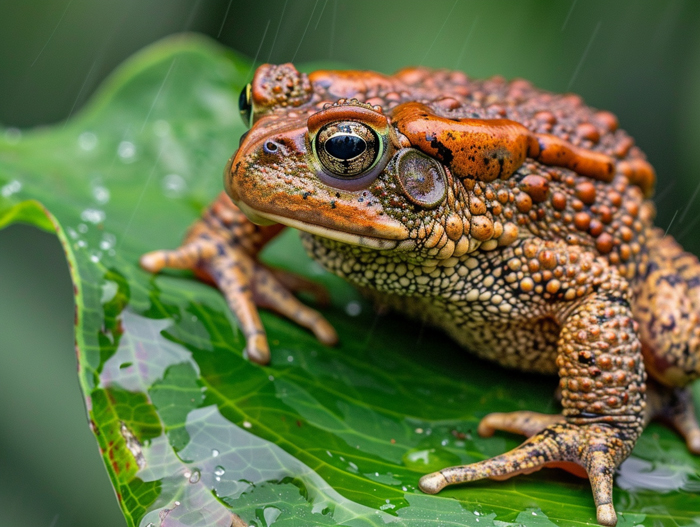
Cane Toad
- Natural Habitat: Originally from South and Central America.
- Introduced Regions: Australia, Florida, Caribbean islands, Hawaii.
- Preferred Environment: Tropical and subtropical regions.
- Range: Southeastern United States.
- Habitat: Forests, gardens, near water bodies.
- Environmental Preferences: Moist environments.
Diet and Behavior
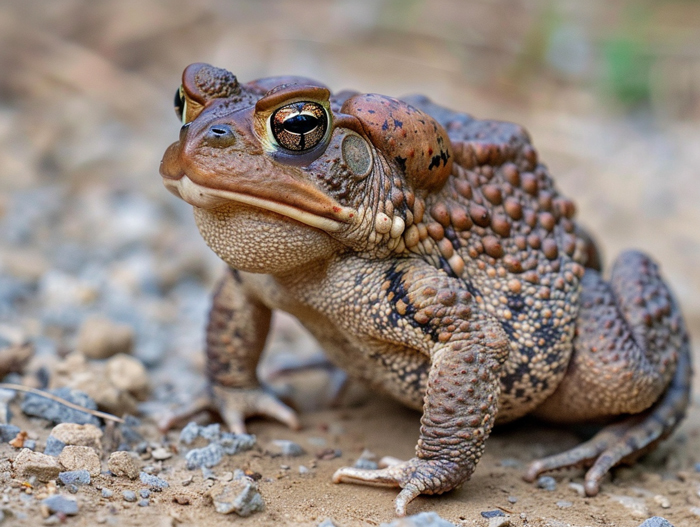
Cane Toad
- Diet: Cane toads are voracious eaters known to consume a wide variety of prey. Their diet includes insects, small mammals, reptiles, and even other amphibians.
- Behavior: They are nocturnal creatures, primarily active during the night. When threatened, they secrete a toxic substance from glands behind their eyes, serving as a defense mechanism.
- Diet: Southern toads have a more limited diet compared to cane toads. They feed mainly on insects and small invertebrates.
- Behavior: Southern toads are more solitary and are primarily active during damp evenings. They are less likely to secrete toxic substances when threatened compared to cane toads.
Ecological Impact
Cane Toad
- Introduced to Australia in 1935 to control cane beetles
- Rapid spread due to lack of natural predators
- Consume large quantities of insects, small mammals, reptiles, and amphibians
- Negative impact on native species population
- Secrete toxic substances harmful to predators
- Native to the southeastern United States
- Feed on insects and small invertebrates
- Less aggressive in competition
- Solitary creatures with a smaller territory range
- Less likely to secrete toxins when threatened
Stay tuned for more insights on the differences between cane toads and southern toads.
Conclusion
To conclude, while both cane toads and Southern toads have their own unique characteristics, it’s clear that the ecological impact of cane toads is more significant due to their aggressive nature, wide-ranging diet, and toxic secretions. On the other hand, Southern toads, with their limited diet and less aggressive behavior, have a lesser impact on their ecosystem. Understanding the differences between these two species is crucial for conservation efforts and managing invasive species. By recognizing the distinct traits of each toad species, we can better protect native wildlife and maintain the delicate balance of our ecosystems.

Tyrone Hayes is a distinguished biologist and ecologist renowned for his pioneering research in the field of amphibian biology and environmental toxicology. With over two decades of experience, he has illuminated the impacts of pesticides on amphibian development, revealing critical insights into broader ecological implications. Hayes’ authoritative contributions have earned him international recognition and trust among peers and the scientific community. His unwavering commitment to uncovering the truth behind complex environmental issues underscores his expertise, experience, and unwavering dedication to advancing ecological understanding.
